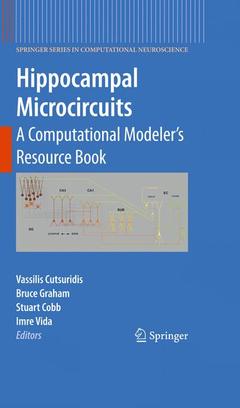Description
Hippocampal microcircuits: a computational modeler's sourcebook (Series in computational neuroscience) with CD-ROM, 2010
A Computational Modeler's Resource Book
Springer Series in Computational Neuroscience Series, Vol. 5
Coordinators: Cutsuridis Vassilis, Graham Bruce, Cobb Stuart, Vida Imre
Language: English
Subjects for Hippocampal microcircuits: a computational modeler's...:
Publication date: 05-2012
617 p. · 15.5x23.5 cm · Paperback
Out of Print
Publication date: 03-2010
450 p. · 15.5x23.5 cm · Paperback
Replaced by new edition: Access to the new edition.
Description
/li>Contents
/li>Biography
/li>Comment
/li>
Dr. Vassilis Cutsuridis is a Research Fellow in the Department of Computing Science and Mathematics at the University of Stirling, Scotland, UK.
Bruce P. Graham is a Reader in Computing Science in the Department of Computing Science and Mathematics at the University of Stirling.
Stuart Cobb is a Senior Lecturer in the Neuroscience and Molecular Pharmacology Department at the University of Glasgow, Scotland, UK.
Imre Vida is a Senior Lecturer in the Neuroscience and Molecular Pharmacology Department at the University of Glasgow.




